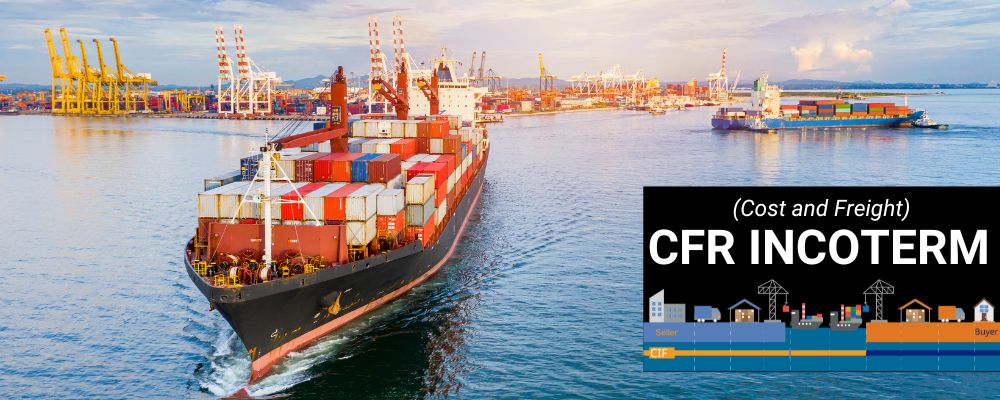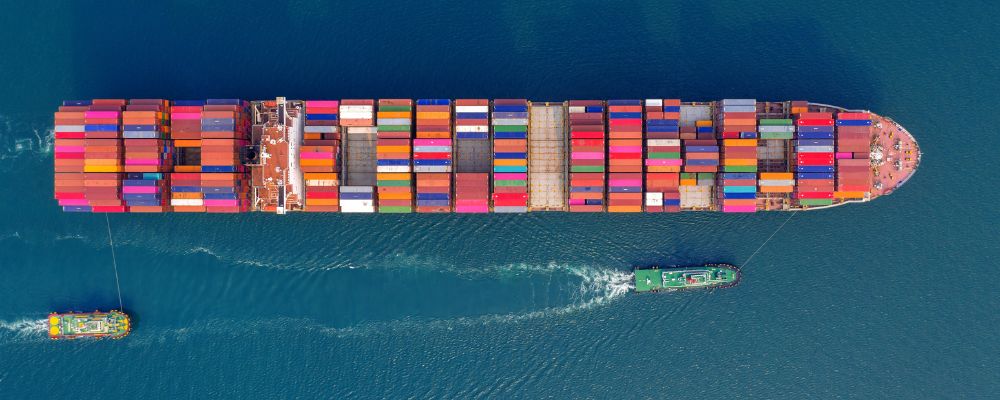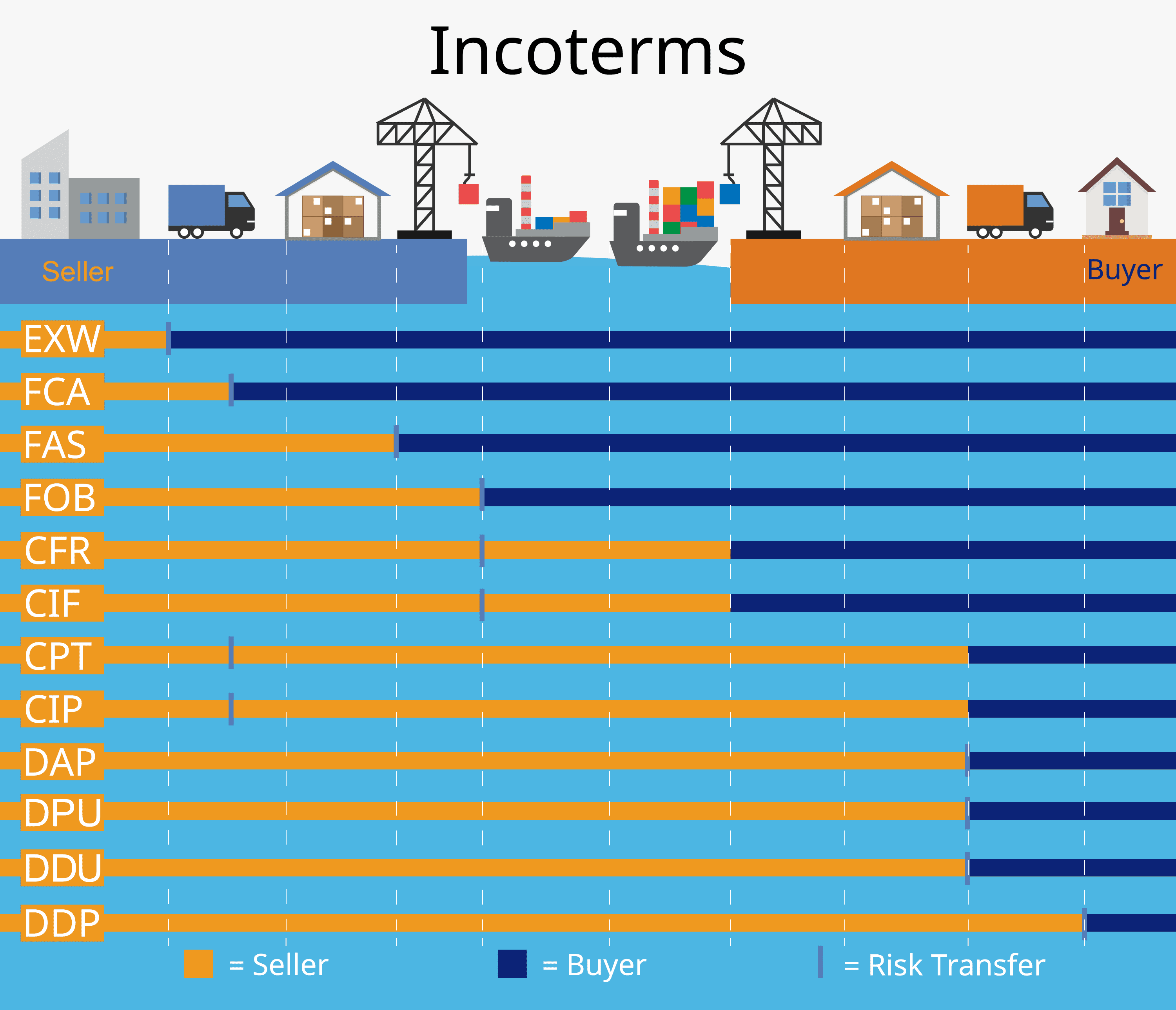
If you are involved in international trade, then you have probably come across various terms and acronyms related to shipping and delivery. One such term is CFR Incoterm, which stands for Cost and Freight. This widely used commercial term defines the responsibilities of the buyer and seller when it comes to the transportation of goods by sea. Understanding the ins and outs of CFR Incoterm can greatly benefit your business, ensuring smooth transactions and minimizing risks along the way.
So, let’s dive into this comprehensive guide that will walk you through everything you need to know about CFR Incoterm! Whether you are a seasoned importer or just starting out in global trade, this article will provide valuable insights into how CFR works and its key differences from CIF Incoterm. Let’s get started!
What is the CFR Incoterm (Cost and Freight)
CFR, which stands for Cost and Freight, is an international trade term that outlines the responsibilities of the seller and buyer in a transaction where goods are transported by sea. Under CFR Incoterm, the seller is responsible for delivering the goods to a named port of destination at their own expense. This includes arranging transportation and paying for freight charges.
Once the goods have been loaded onto the vessel at the port of origin, all costs and risks associated with transportation are transferred to the buyer. In other words, from this point forward, it’s on you as a buyer to handle any additional costs or risks involved in getting your shipment delivered.
It’s important to note that under CFR Incoterm, insurance coverage for cargo during transit is not included. The responsibility for obtaining insurance falls on the buyer unless otherwise agreed upon between both parties. However, since CFR only covers transport up until arrival at port, some buyers opt to use CIF instead if they require insurance coverage throughout transit.
The main advantage of using CFR Incoterm is its simplicity and straightforwardness. With clearly defined roles and obligations for both parties involved, it minimizes confusion or disputes regarding who bears what responsibilities during shipping.
Understanding what CFR Incoterm entails can help you navigate international trade more effectively by knowing exactly what your obligations are as either a seller or a buyer when it comes to transporting goods by sea. Now that we have covered what CFR stands for let’s dive into specific obligations each party has under this incoterm!
Seller’s obligations under the CFR Incoterm
When it comes to the CFR Incoterm (Cost and Freight), sellers have specific responsibilities they must fulfill. This internationally recognized trade term outlines the obligations that sellers have in terms of delivering goods to buyers.
The seller is responsible for ensuring that the goods are delivered to a named port of shipment within the agreed-upon time frame. This means that they need to make all necessary arrangements for the transportation of the goods from their own location to the specified port.
Sellers must handle export customs clearance procedures. This includes obtaining any required permits or licenses, completing documentation such as commercial invoices and packing lists, and providing these documents to both customs authorities and buyers.
Additionally, sellers are responsible for packaging and labeling goods appropriately so that they are suitable for transportation by sea freight. Proper packaging ensures that products arrive safely at their destination without damage or loss during transit.
Furthermore, sellers must arrange for insurance coverage on behalf of buyers against risks associated with transporting goods until delivery is completed. Although this is not mandatory under CFR, it is generally recommended as an added layer of protection.
Next, sellers need to provide buyers with relevant documents related to shipping and delivery. These may include bill(s) of lading or other transport documents which serve as proof that the goods have been shipped and transferred into buyer’s possession.
Once all necessary steps have been taken up until this point, sellers should bear costs related to loading fees onto vessels at the port of shipment. The costs covered typically include those incurred during loading operations such as stowage charges or securing cargo on board a vessel.

Buyer’s obligations under the CFR Incoterm
Buyers also have their set of responsibilities. Let’s take a closer look at what these obligations entail.
The buyer is responsible for payment of the price agreed upon in the contract of sale. This means that they must ensure timely payment to the seller as per their agreement. Failure to do so could result in delays or even legal issues.
Next, buyers are required to obtain any necessary licenses or authorizations needed for importation and customs clearance. It is crucial for them to comply with all applicable laws and regulations during this process. Failure to secure proper documentation can lead to delays or penalties at customs.
Additionally, under CFR, buyers are responsible for arranging transportation from the port of shipment to their desired destination. This includes booking cargo space on vessels or other modes of transport, as well as coordinating logistics related to delivery.
Buyers should also take responsibility for insurance coverage during transit. Although CFR does not require sellers to provide insurance, it is prudent for buyers to protect themselves against potential loss or damage while goods are in transit.
Moreover, once the goods arrive at the designated port of destination, it is essential for buyers to handle all costs associated with unloading and clearing customs formalities. This may include paying duties, taxes, fees, and any additional charges imposed by local authorities.
Lastly but importantly, buyers need to inform sellers about any specific requirements regarding packaging or labeling before shipment begins. Clear communication between both parties ensures that goods meet buyer expectations upon arrival.
Understanding these obligations helps both sellers and buyers navigate through international trade smoothly when using CFR Incoterm (Cost and Freight). By fulfilling these responsibilities diligently and efficiently, everyone involved can enjoy a successful transaction without unnecessary complications
CFR vs CIF Incoterm
When it comes to international trade, two commonly used incoterms are CFR (Cost and Freight) and CIF (Cost, Insurance, and Freight). While they may seem similar at first glance, there are some important differences between the two.
Under the CFR Incoterm, the seller is responsible for delivering the goods to a named port of destination. The seller also bears the cost and risk of transporting the goods to that port. However, once the goods have been loaded onto the vessel, any risk or loss becomes the buyer’s responsibility.
On the other hand, under CIF Incoterm, in addition to all obligations under CFR terms, sellers are required to provide insurance coverage against loss or damage during transit. This means that sellers must obtain marine insurance on behalf of buyers for protection throughout shipment.
So why would a buyer choose one over the other? Well, it often depends on factors such as cost considerations and trust between parties. If a buyer wants more control over insuring their goods or prefers using their own insurance provider with specific coverage requirements, they may opt for CFR instead of CIF.









